On the fifth anniversary of Keith Emerson’s tragic death, GARY STEEL calls for a reassessment of the pioneering keyboardist.
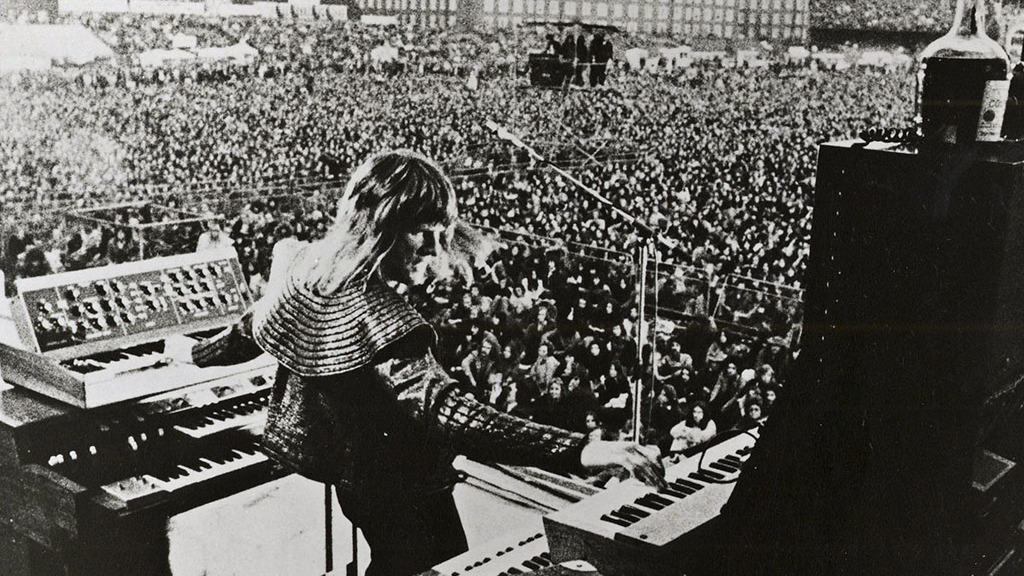
On 11 March 2016, Keith Emerson (grabbed a gun and blew his head off. While the musical world seemed largely indifferent to this tragedy, I reeled with the news. It felt for some time that my world was unspooling.
I’d had childhood heroes, fictional heroes like Caspar the friendly ghost and Kimba the white lion, but Keith Emerson was my first real hero, the idol of my adolescence. I even cut out his picture and took it to my hairdresser and asked for a haircut like that.
Would you like to support our mission to bring intelligence, insight and great writing to entertainment journalism? Help to pay for the coffee that keeps our brains working and fingers typing just for you. Witchdoctor, entertainment for grownups. Your one-off (or monthly) $5 or $10 donation will support Witchdoctor.co.nz. and help us keep producing quality content. It’s really easy to donate, just click the ‘Become a supporter’ button below.
Facing the grim drudge of a rugby-obsessed high school, I needed some magic to lift my spirits. Keith Emerson was just the keyboard super-warrior I needed. Music was already everything to me. Rock music, that is. Every time I put Hendrix on the family radiogram, I wanted to be that screaming, soaring guitar. When I played The Doors, I wanted nothing more than to be that shamanic, leather-clad singer. It was a tie: I couldn’t decide which one I wanted to be more.
Until I heard Keith Emerson, that is.
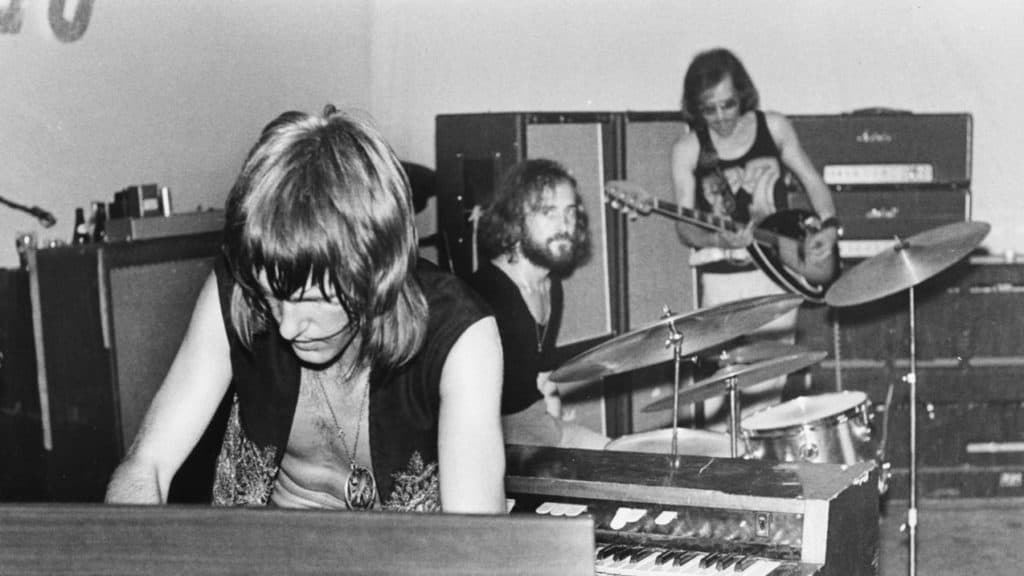
My mother, casting off her suburban neuroses, bought a grocery store. In 1971, supermarkets were still a novelty and people still bought most of their supplies from privately owned stores with free daily deliveries. They were a hub of the community, serving the same purpose 4 Square grocery stores in rural areas do today.
Down the back of the shop, there was a swivelling rack of cut-price LP records. This rack was my one point of interest in my mother’s endeavours. I managed to sneak every one of those records home for audition, and when I found one I really liked, I would of course plead, cajole and generally pester my parents until they let me keep it. (Of course, I had to do double-duty cleaning out the freezers and stocking the shelves).
Budget rack records that made it into my burgeoning collection included Pink Floyd’s Relics compilation, an album of pre-Experience Hendrix noodling, and three records by The Nice, The Thoughts Of Emerlist Davjack (1967), Ars Longa Vita Brevis (1968) and Nice (1969). They were a revelation.
I wouldn’t learn this until years later, but The Nice were originally put together to back UK-based soul singer P.P. Arnold and subsequently signed to Rolling Stones manager Andrew Loog Oldham’s Immediate record label. They were (mostly) a three-piece whose music revolved around the precocious talent of keyboardist Keith Emerson, and while the first album was a prototypical slice of psychedelia, Emerson’s emergent jazz and classical inclinations were already apparent in the pounding, marathon variations of Dave Brubeck’s ‘Blue Rondo A La Turk’ (‘Round Round Round’), renamed simply ‘Rondo’.
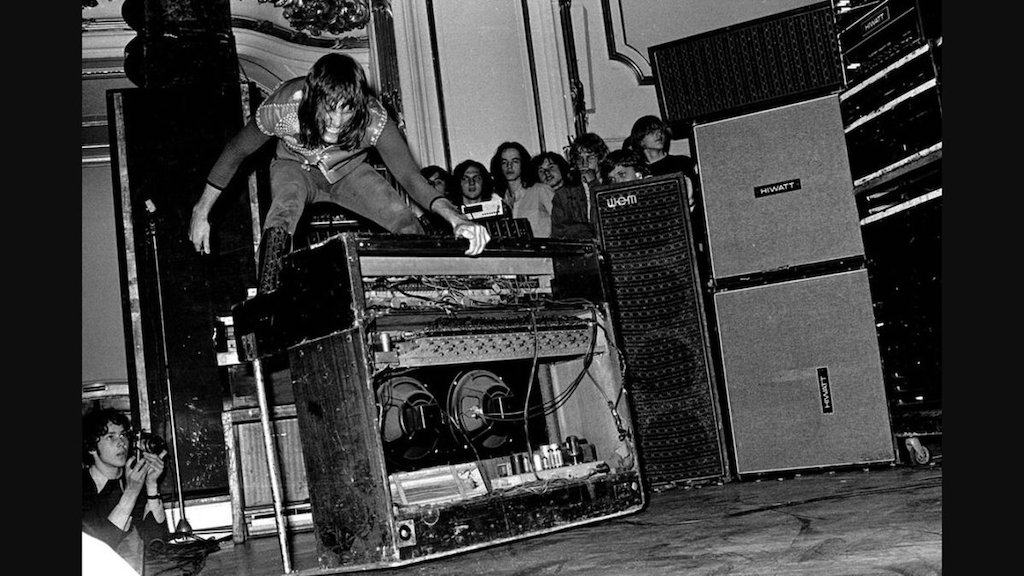
A year later the group had ditched its guitarist, making the group a trio and highlighting Emerson’s talents on Hammond organ and piano. Anyone searching for the genesis (so to speak) of so-called ‘progressive rock’ need look no further than Ars Longa Vita Brevis (apparently meaning ‘art is long, life is short’) featured an interpretation of an extract by Finnish composer Sibelius and side 2 contained just one 19-minute piece with orchestral overdubs.
The album was ground-breaking but occasionally awkward. This was a time when the establishment looked down on rock music, and despite the popularity of psychedelia with a subset of youth, it was still considered “underground”. The idea of polluting the hallowed masterpieces of dead European composers with dirty rock music was beyond contemplation for many, but to me, it made perfect sense.
https://www.youtube.com/watch?v=BLVEIGsG1Og
I’d worked my way through my brother’s LP anthologies of classical music, and had an appreciation of the form, but it also seemed really stuffy and antiquated. The classics needed a spanking, and who better to do so than Keith Emerson, whose appreciation of classical music didn’t stop him from taking the piss.
There are several live recordings of The Nice performing a work by Tchaikovsky that’s interrupted by Emerson flagellating some electronic gizmo that sounds like a 1000-watt fart. It’s a great comedic moment that exemplifies Emerson’s attitude and personality.
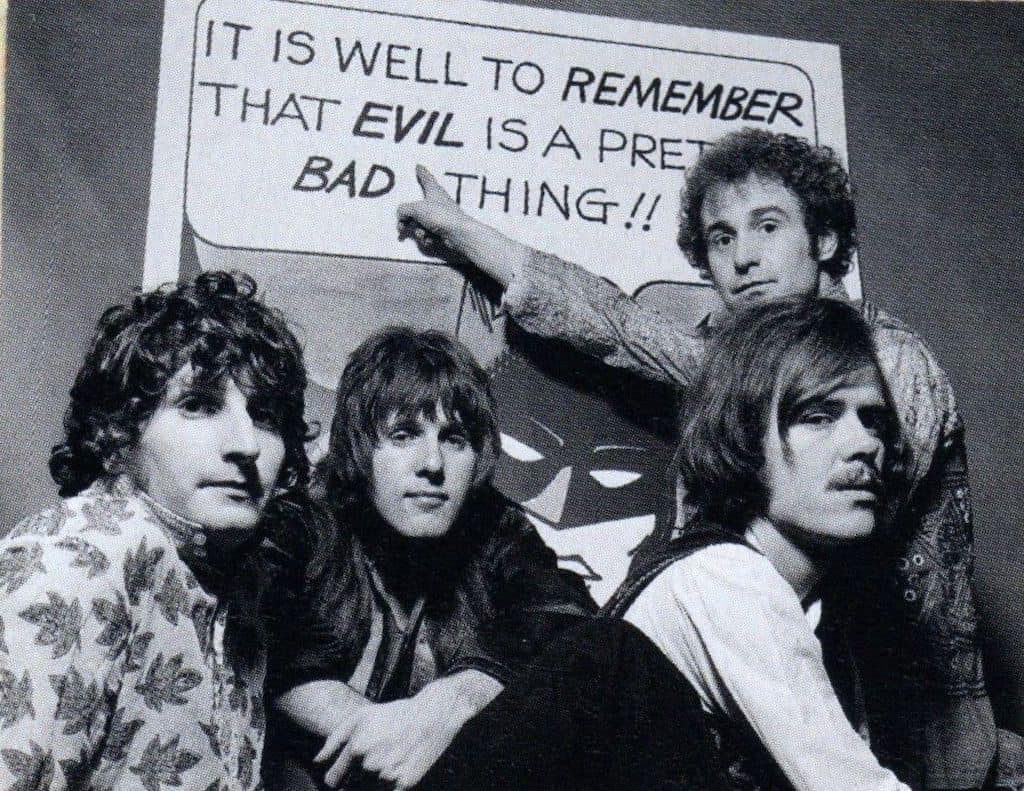
The flower power generation may have been all about tearing down the past – its institutions, its conservatism – but Emerson had grown up tutored in the classic repertoire. He loved it and hated it. His best work would be an exposition of that duality.
The Nice albums weren’t all classic-rock fusions. They were one of legendary DJ John Peel’s favourite groups because, presumably, they also had actual songs and there was levity to their presentation. On the first side of Ars Longa Vita Brevis you’ll hear ‘Daddy, Where Did I Come From?’ with its rare Emerson vocal and a sexual education message that seems rather quaint in the 21st century. There’s also the sly, almost funky ‘Little Arabella’ with its bubbling Hammond work. The group’s third album, simply named Nice, further proved Emerson’s versatility.
The record featured the definitive version of Tim Hardin’s lovely, heartbreaking ‘Hang On To A Dream’ with a superb, jazz and classically influenced piano performance by Emerson. There was also an unexpected live take on Dylan’s ‘She Belongs To Me’ and the roiling oddness of ‘Azrael Revisited’. As with many other compositions later in his career, Emerson built modules of classical pieces into the tune, in this case, Rachmaninoff’s Prelude In C# Minor.
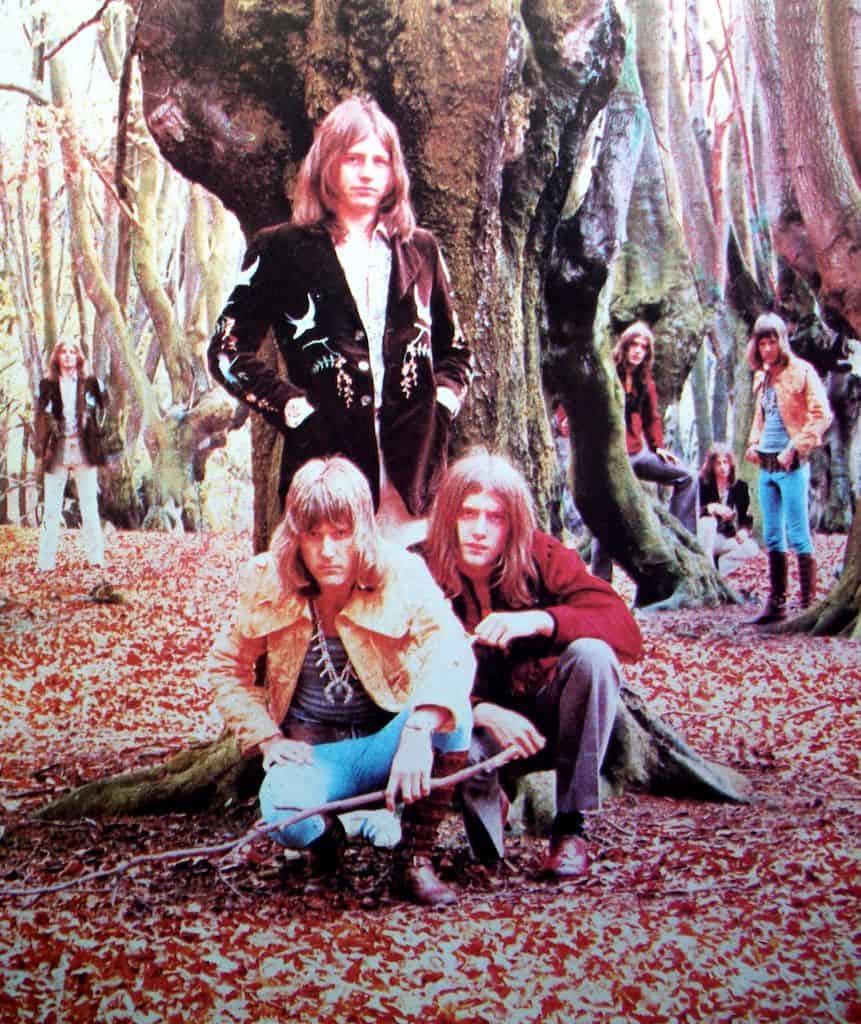
Shortly after acquiring The Nice albums, but before I figured out who they were, I read an article in some short-lived glossy music magazine proclaiming Emerson, Lake & Palmer as the “eighth wonder of the world” and featuring photographs of the immense lorries that carted their huge PA system and stage setup around. I had to hear this group. After locating their self-titled debut album at the local record store, I trudged home in my scratchy-pants school uniform, put the needle on the platter, and my life changed.
I hadn’t twigged until now that Emerson, Lake & Palmer was The Nice keyboardist’s new group. Hey, we didn’t have the internet back then. Sometimes, it took weeks or even months to glean an important fact or figure out who was who and how the puzzle fit together. I didn’t know the story about how Keith Emerson had reluctantly ditched the two Nice guys in favour of former King Crimson vocalist/bassist Greg Lake and former Arthur Brown drummer Carl Palmer to form one of rock’s first supergroups.
I loved The Nice but this was something else. Where the classical-rock fusion of that group was often tentative, the first Emerson, Lake and Palmer album was on-point. Emerson had found a voice in Greg Lake that could really sing. All three were dazzling instrumentalists. But equally important was that studio technology had evolved by 1970 to better reflect Emerson’s ambitions. It sounded amazing. You could really hear the thump and sizzle of the drums, and incredibly, they were able to combine acoustic and electric instruments without drowning the former out.
A great example of that is the first track, ‘The Barbarian’, an arrangement of a piece by Béla Bartók, in which the piano-driven piece attains almost heavy metal sonic dimensions. Right from the gnarly opening measures of Lake’s fuzztone it’s heavy as fuck, but there’s also room for some pianistic flights of fancy in the middle, before the raging Hammond returns to the main theme.
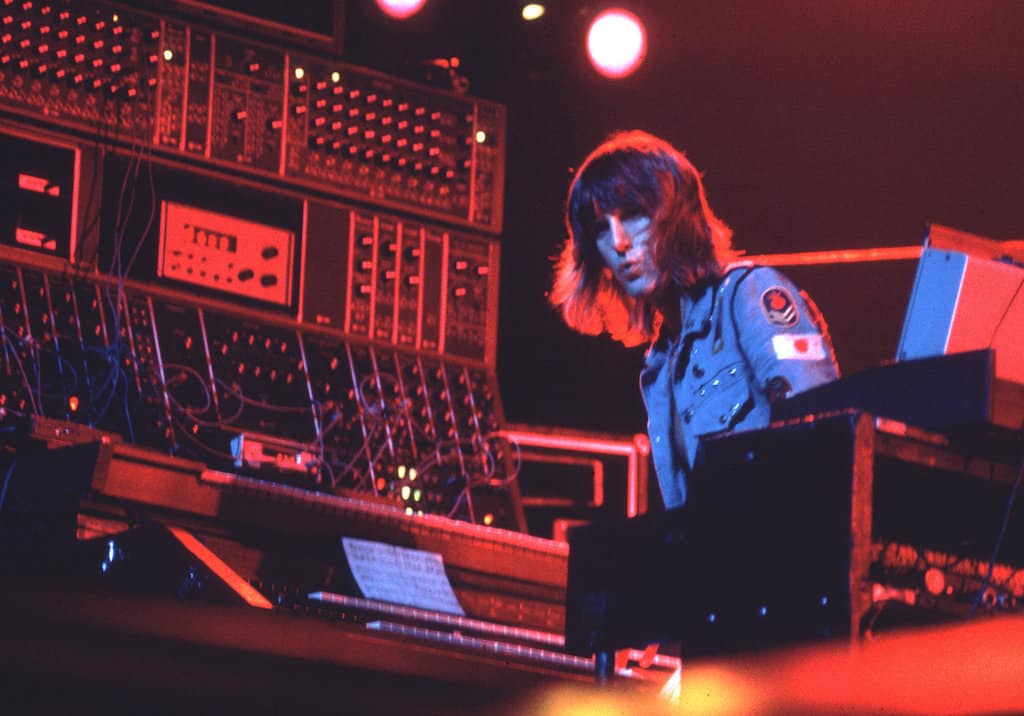
The first time rock music had sounded this good had been on King Crimson’s In The Court Of The Crimson King (1969), and the first ELP album is very much its shadow, inheriting that album’s extraordinary studio engineering along with its apocalyptic imagery. But while King Crimson was a guitar-fuelled group, ELP was a trio in which Keith Emerson’s keyboards were very much the dominant sonic ingredient.
While other kids were headbanging to heavy metal, my sensibilities required something more to engage with. Keith Emerson (with Lake and Palmer) gave me that. As he flip-flopped from one vigorous workout on the piano to another on the organ I could fantasise about his having superhuman keyboard abilities. And on top of all that, he’d discovered the Moog Synthesiser.
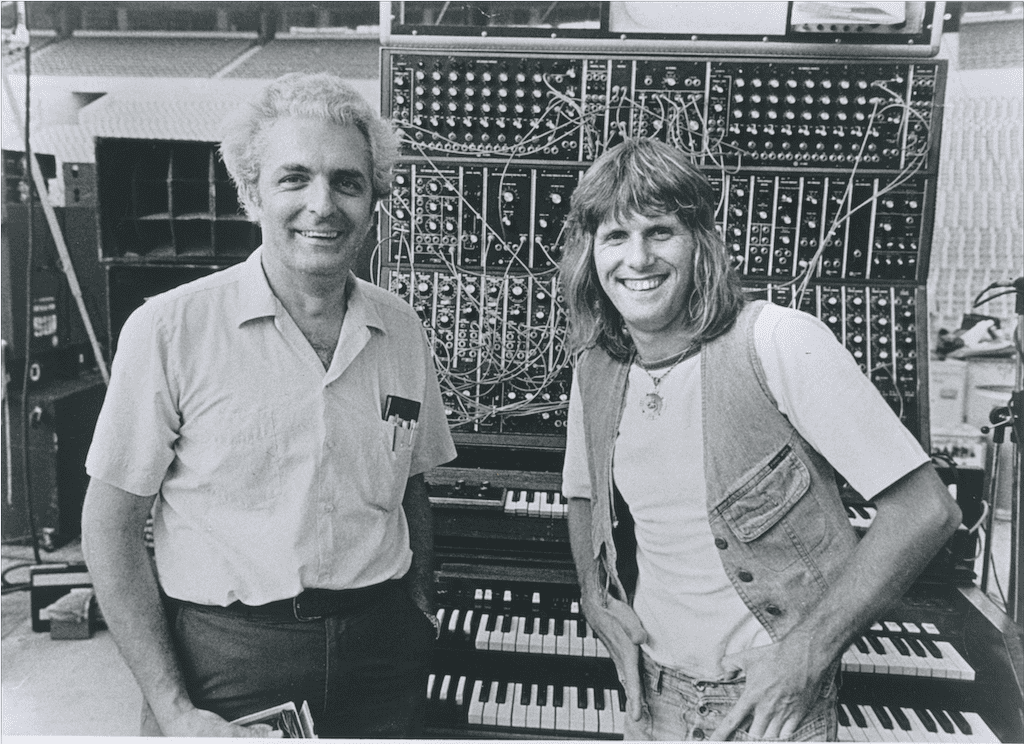
Emerson was instrumental in popularising the instrument in a rock context, and worked closely with its creator, Robert Moog, to develop its roadworthiness. In 2021 modular synthesis is once again gaining great traction as electronic musicians lose faith in their laptops. Meanwhile, back in 1970, Greg Lake’s simple acoustic ballad, ‘Lucky Man’, featured a spontaneously tacked on Keith Emerson Moog solo that would send reverberations through the music scene. It still sounds spooky and wonderful, and from then on the instrument would become an important part of Emerson’s palette.
What I appreciated about Emerson was the sonic and virtuosic actuality of the recordings. It was years later that I saw video clips of his bizarre performances stabbing Hammond organs with daggers and manhandling them onstage for effect.
After Emerson’s death in 2016 (and shortly before his own from cancer) I read Greg Lake’s rather dull autobiography, and he painted a sad picture of his former musical colleague. Keith Emerson had been an only child and he’d been intensely lonely as a boy. This had manifested later on in a need to show off and be the centre of it all.
https://www.youtube.com/watch?v=s4iJfbi6s3M
Lake and other former collaborators write about Emerson’s innate shyness and generous spirit. Progressive rock and ELP in particular are often accused of pretentiousness, but Emerson in person was the antithesis of pretentious. Growing up enamoured of jazz and classical music, it must have seemed the most natural thing in the world to combine his musical interests with the music of the day – rock. At heart, Emerson was a performer/composer of real merit who came from a lineage that saw the value in entertainment. Unlike the toffs in Genesis, he came from a lower-middle-class background and could no doubt appreciate the entertainment value of players like Little Richard and Jerry Lee Lewis, and would have also been exposed to the music hall entertainment that was so prominent in the England of his youth.
Unlike King Crimson, which kept its serious hat on at all times, ELP often walked a tightrope between art and entertainment value, and that exposed them to vociferous critics like Lester Bangs, who misinterpreted them and then set about exposing them as pretentious frauds.
For me, ELP had four good studio albums in them between that stunning debut and Brain Salad Surgery in 1973, which I rushed to buy on the day of its release. On those albums – flawed as they are – can be found a treasure trove of ideas, and incredible performances of great compositions. It’s Keith Emerson who carries most of the musical weight, squeezing amazing sounds (and inflections) from those primitive monophonic Moogs and darting from nimble piano passages to some of the best Hammond solos ever committed to whale-oil saturated tape stock.
For a moment in time, they were the biggest band in the world and playing to braying arena crowds throughout America, as captured on the 1974 triple album, Welcome Back My Friends To The Show That Never Ends, Ladies And Gentleman, Emerson Lake And Palmer! And then it was over.
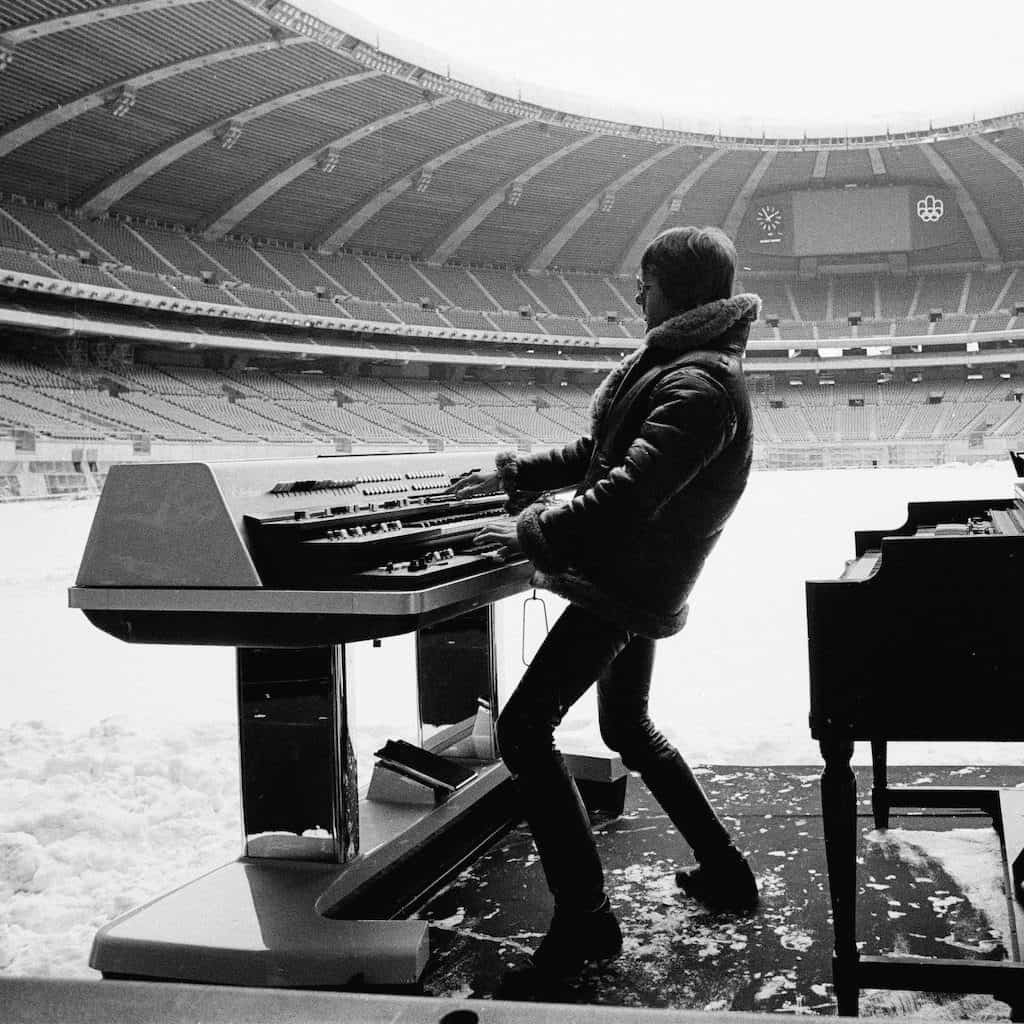
By the time Emerson and his cohorts returned in 1977 with the rather cool reworking of ‘Fanfare For The Common Man’ and a fully orchestral tour that put the group fatally into the red, my attention was on rock’s next generation. I could engage with the energy of punk but the music itself was boring. But a wealth of adventuresome music grew in its place.
With ELP, Emerson had painted himself into a corner from which he could never emerge. There was some fairly good soundtrack work, but where there should have been solo albums and fertile collaborations where he explored his influences, there was a void.
There’s some television footage online of Emerson performing with jazz player Oscar Peterson that gives an indication of where he might have headed. Similarly, Emerson plays a cracking organ solo on a version of the Eddie Harris song ‘Freedom Jazz Dance’ on a supersession album that’s as funky as. But really, Emerson was an oddball who wanted to be a serious composer on the one hand but an entertainer on the other. Out of the spotlight, he was invisible.
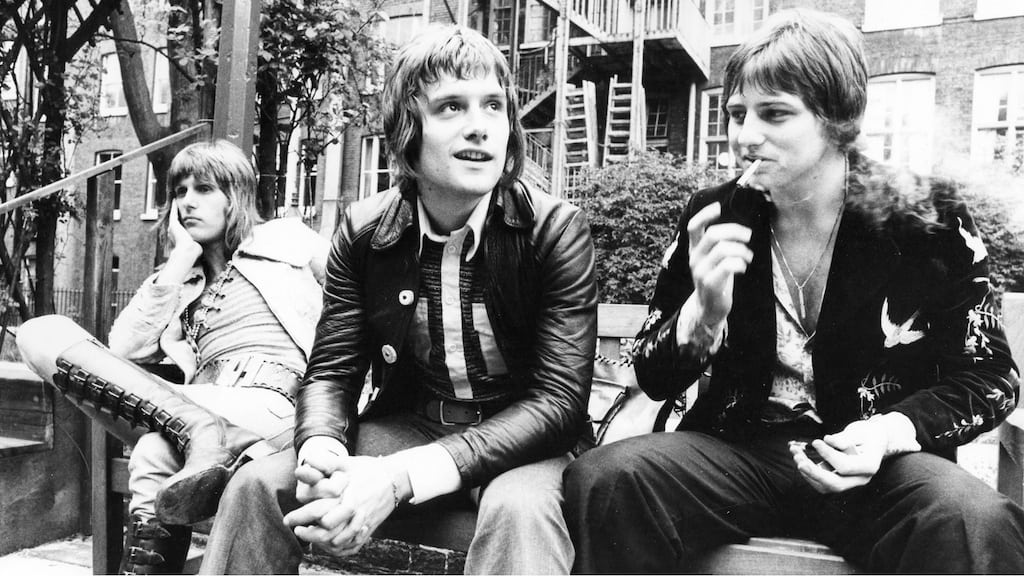
Of course, my adolescent fantasy that Emerson’s ability on multiple keyboards was superheroic turned out to be a fallacy. Listen to the fluidity and speed of a player like Chick Corea on Return To Forever’s Romantic Warrior and Emerson’s limitations become apparent. On reflection, what’s great about Emerson’s playing is the sheer gall with which he attempted his flights of fancy on those Nice and ELP tracks. It’s the ambition behind every composition and performative pinnacle that stands out. These days, my seasoned ears can hear all the missed notes and little glitches that punctuated his performances, and they humanise it. And on tracks where his piano playing once sounded like deep jazz explorations, I can hear his intentional interference by way of honky tonk and boogie flavours.
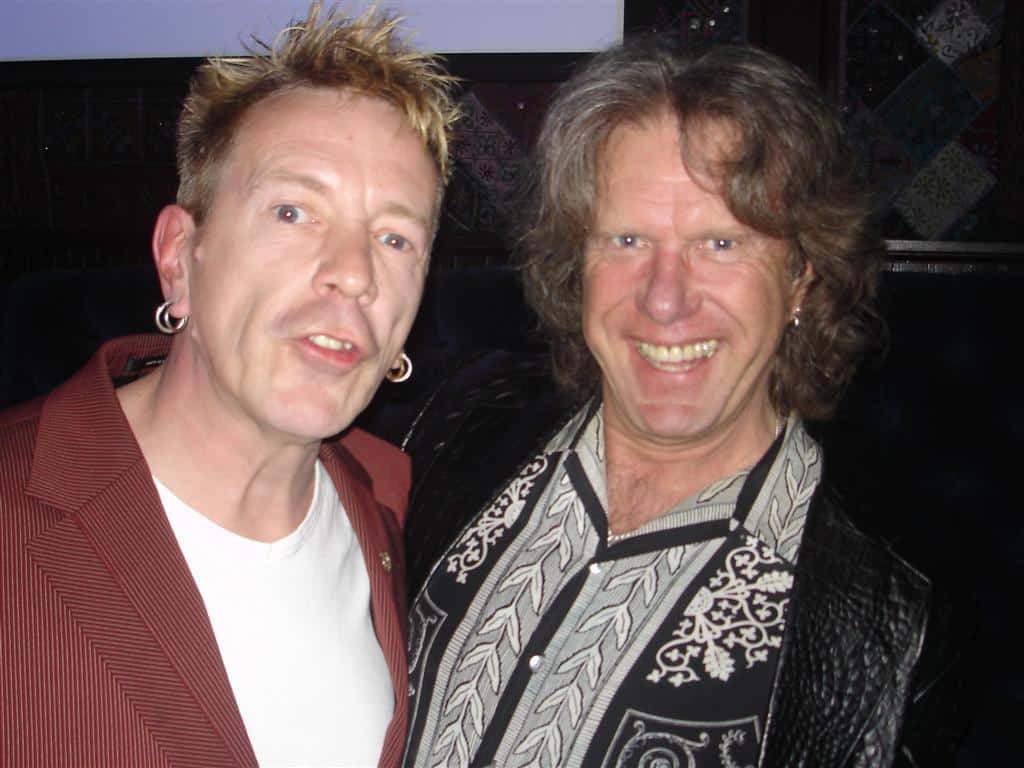
Inevitably, there were reunions but I was busy listening to the latest thing. Emerson moved to LA, where ironically, he became buddies with Johnny “Rotten” Lydon of The Sex Pistols. In the ‘90s he developed serious repetitive strain injuries that were said to have been caused by performing on keyboards while standing up. There were operations to repair the damage, but complications ensued. At the time of his death he was readying himself for a Japanese performance that he knew he wouldn’t be able to perform to his high standards.
After the sudden death, Greg Lake said that Emerson had been increasingly confused, desperate and depressed in his last years, and had endured depression since at least 1977. No wonder, then, that Emerson’s own memoir, Pictures Of An Exhibitionist (2003), was such a romp. While it was a fun read with loads of great stories of the ‘60s and ‘70s, it was way too cheery, way too upbeat.
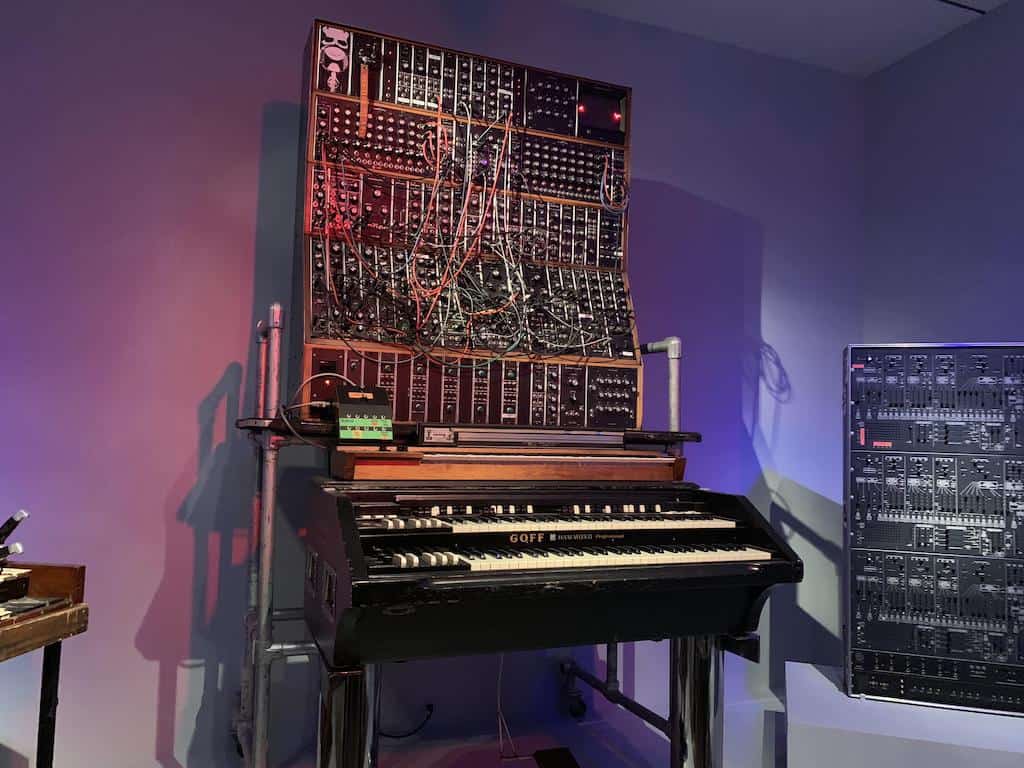
There’s a sad clip on YouTube where he’s playing the piano at some function, and everyone is ignoring him. He looks crestfallen. Out of the limelight, unable to perform: welcome to Emerson’s nightmare.
Was Keith Emerson misunderstood in his time? Yes. Had his time passed? Probably. I’m still a fan, and when I listen to those old records, I don’t really connect to the adolescent that adored them so much between ’71 and ’73. But I do appreciate Emerson’s work in a different way, and wish he was still around to lap up the attention that would have surely come his way, eventually.
* Keith Emerson, 2 November 1944 to 11 March 2016.




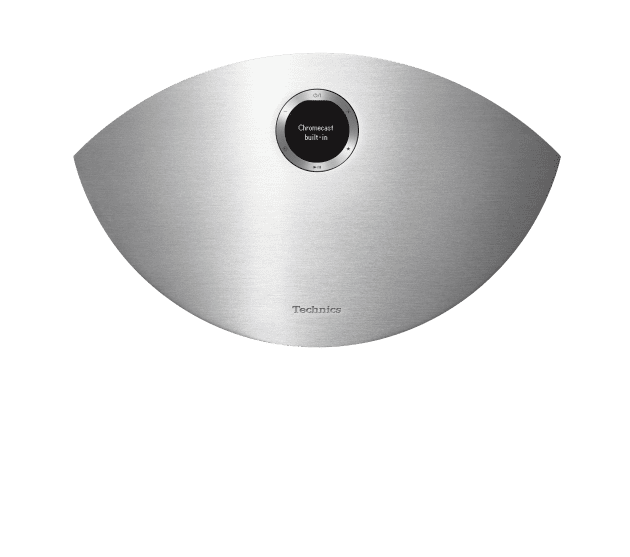

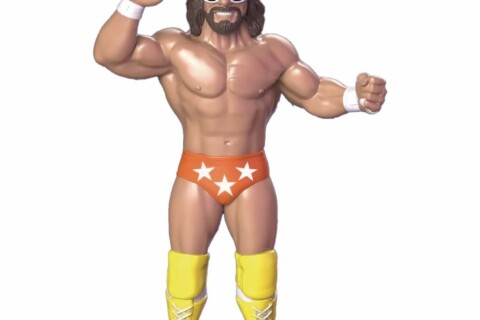
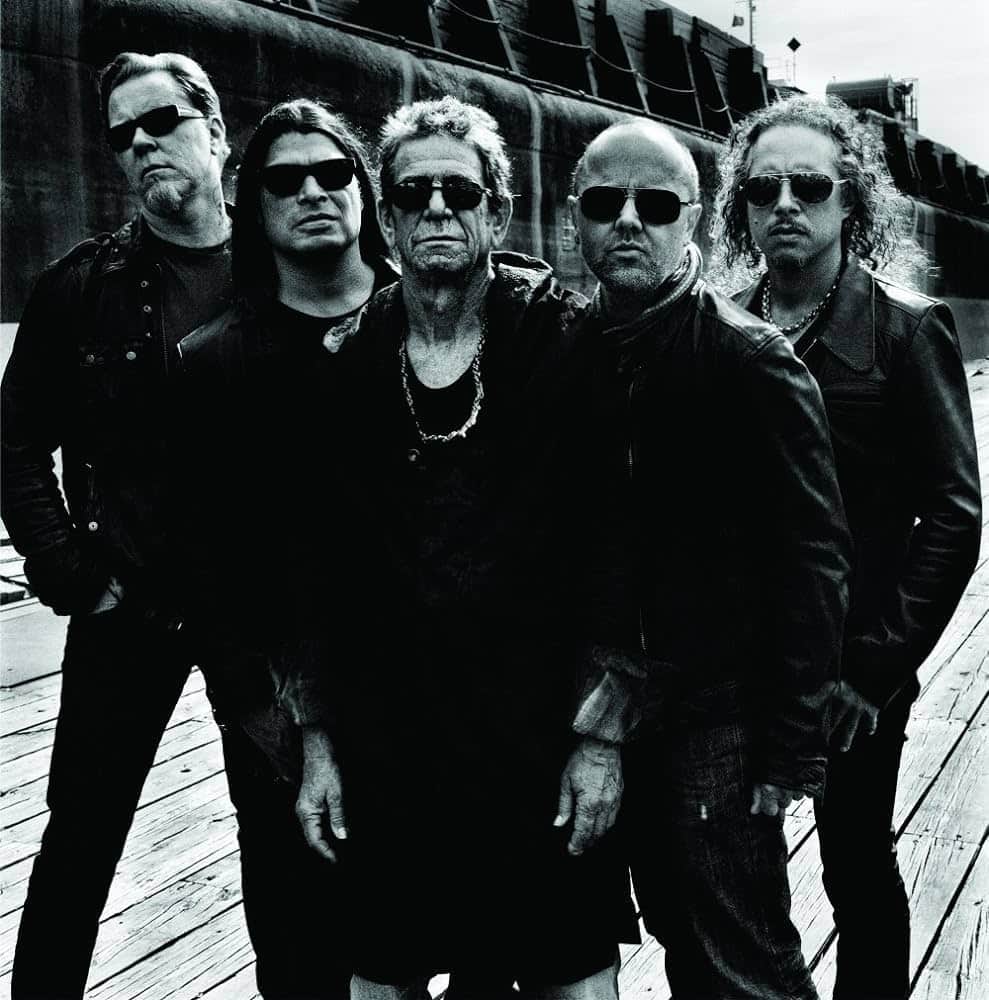
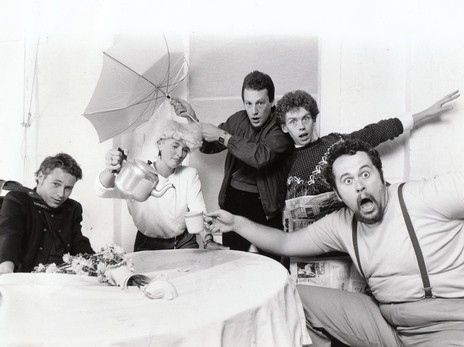


I think Keith Emerson is unrivalled as a keyboard genius.
Emerson was a master of the piano, organ and synthesiser and introduced a generation to classical and jazz music.
Punk did him in , but his ability will always shine through. .
Nice piece. Thanks. ELP are not really my cuppa and I realize it is so uncool to like them, but I listen to Trilogy every now and again and get a buzz out of it. Great recording and it sure bounces along at a fair pace.